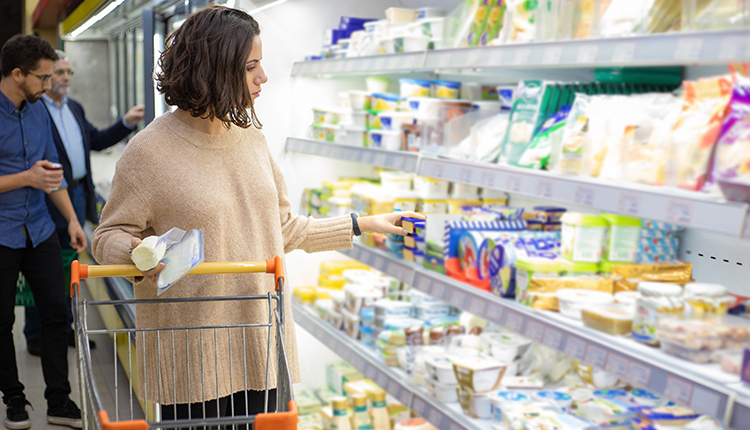As printed in our August 10, 2017 issue . . .
CLASS III FUTURES HELD STEADY shifting only 25 cents during early to late July trading on the CME. August to December contracts averaged $16.85 at the magazine’s close. January to June 2018 contracts netted $16.57 with no month under $16.30 or over $17.
THE 2017 ALL-MILK PRICE could average $17.80, predicted USDA economists. That forecast was off 20 cents from one month earlier.
SPOT U.S. BUTTER TRADED ABOVE $2.60 per pound throughout July due to strong demand. Brisk sales also existed worldwide as New Zealand’s Global Dairy Trade reported a $2.72 per pound value. Since January 2016, butter values climbed 111 percent on that trading platform.
A $2 PRICE FLOOR FOR BUTTER may be the new norm, except during intervals with extreme surplus, reported NMPF’s Peter Vitaliano. Previously, butterfat contributed 28 percent to milk checks’ value. “Now, that number is north of 50 percent,” he said. This new paradigm contributed an additional $2.5 billion to dairy farmers’ milk checks during 2016.
WITH RESEARCH SUPPORTING ANIMAL FATS, butter and whole milk sales have rebounded. In the case of butter, it previously absorbed 16 percent of the nation’s milkfat. It now demands 18 to 19 percent.
RECORD MILK PRODUCTION has been matched by strong domestic sales. Butter consumption rose 4 percent from the prior year with total cheese intake climbing 5 percent, reported USDA economists.
DAIRY EXPORTS CLIMBED TO A TWO-YEAR HIGH in May. Volume shipped rose 15 percent, while total value jumped 34 percent. Exports represented 14.7 percent of production; imports just 3.1 percent.
JUNE MILK GREW 1.7 PERCENT. California fell 2.1 percent; Wisconsin rose 0.2 percent; New York, up 0.4; Idaho, up 1.4; and Pennsylvania held steady. Texas led all gainers, up 15 percent, followed by Colorado, up 8.1.
DAIRY COW CULLING PICKED UP MOMENTUM with 13,000 more cows heading to slaughter plants in June compared to a year earlier. Overall, 1,495,400 dairy cows were culled this year, up 46,100 head.
REDUCED PREMIUMS ON THE FIRST 5 MILLION POUNDS, waiving the administrative fee for “underserved producers,” and moving to monthly payments were among the changes added by the Senate Appropriations Committee to MPP-Dairy as it moves through Congress.
BRIEFLY: DFA, Dean Foods, Kraft Heinz, and Schreiber Foods were the only four U.S. dairy companies to rank among the world’s top 20, reported Rabobank. Canada granted a 5 percent boost in quota to fill butter orders, making that the largest one-time increase since daily quota was implemented in 1998. China granted more access to 200 U.S. dairy exporters in the short term and paved the way to more entrants.
CHEESE TRADING GOES ELECTRONIC.
Since its inception in New York, and later Green Bay and Chicago, cheese trading was a face-to-face transaction. That changed when the CME went electronic in June.
HE STARTED FROM SCRATCH.
Adam Borchert took his farm from a newly established herd to a wholly owned dairy in less than 15 years.
HOW GOOD HERDS FIGHT DIGITAL DERMATITIS.
Successful control included rigorous footbath management, excellent foot and leg hygiene, tight biosecurity, and regular hoof trimming schedules.




